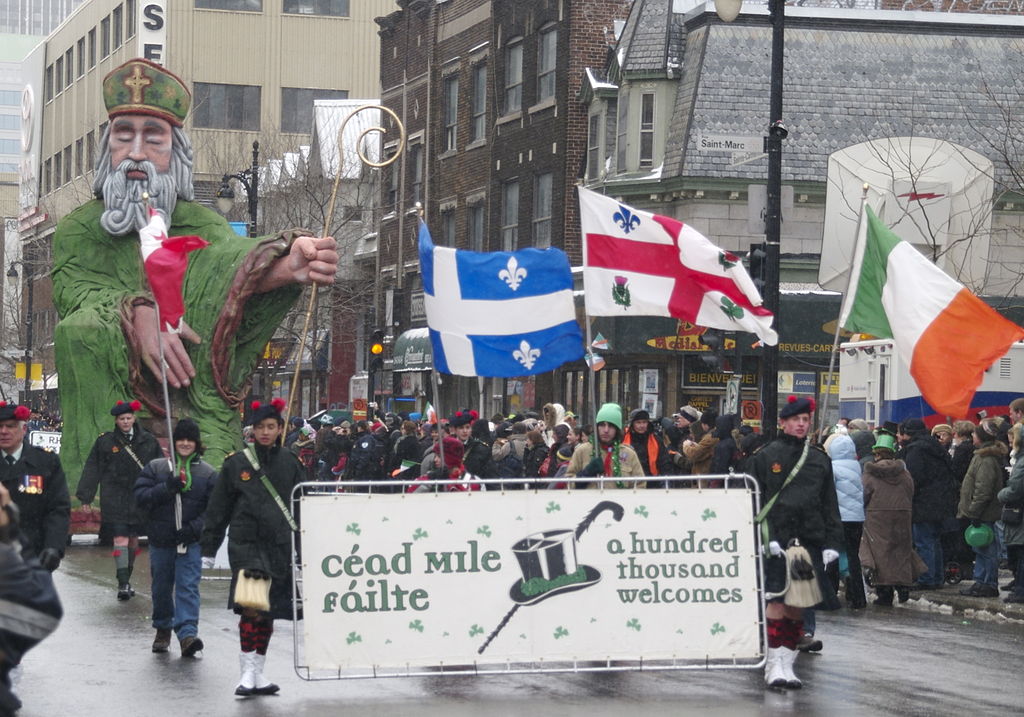An annual celebration of Irish identity, St. Patrick’s Day has been a cause for celebration and controversy across the country (see Irish Canadians).

Background
Irish immigration to Canada began as early as the 17th century. The population of Irish Canadians increased dramatically in the 19th century, particularly in the wake of The Great Famine of the 1840s. According to the 2016 census, over 4.6 million Canadians — about 13 per cent of the country — claim some Irish heritage.

St. Patrick
According to Catholic accounts, Maewyn Succat was sold into slavery in Ireland in the 4th century. Originally a non-observant Christian, he took solace in prayer during his captivity. After escaping, he took the name Patricius and believed it was his calling to convert the pagan Irish to Christianity. Legend states that he used the shamrock, a three-leafed clover, to explain the concept of the Holy Trinity, and drove the snakes out of Ireland. (The latter is likely a metaphor for converting pagans.)
Though Patricius was never formally canonized, he is regarded as the patron saint of Ireland. In the 17th century, his feast day — 17 March, supposedly the date of his death in 461 — was officially recognized by the Catholic Church.
Modern Celebrations
As Irish immigrants spread around the world, St. Patrick’s feast day became less of a religious observance and more of a celebration of Irish identity (see Irish Canadians; Immigration to Canada). The first St. Patrick’s Day parades held in North America date back to the 17th century. (Ireland did not host a St. Patrick’s Day parade until 1903.)
Canada’s first St. Patrick’s Day parade was held in Montreal in 1824. Ever since, parades and festivals of Irish culture have been held annually on 17 March in cities across Canada. Typical celebrations include dressing in green, displaying Irish symbols such as the shamrock, and drinking green beer.
The celebrations have been known to cause controversy. St. Patrick’s Day parades were banned in Toronto in 1878, after previous parades sparked violence between Catholics and Protestants. Toronto did not hold a parade again until 1988.
More recently, St. Patrick’s Day has been criticized for perpetuating Irish stereotypes, encouraging excessive drinking, and disregarding the cultural and religious significance of St. Patrick.

 Share on Facebook
Share on Facebook Share on X
Share on X Share by Email
Share by Email Share on Google Classroom
Share on Google Classroom



